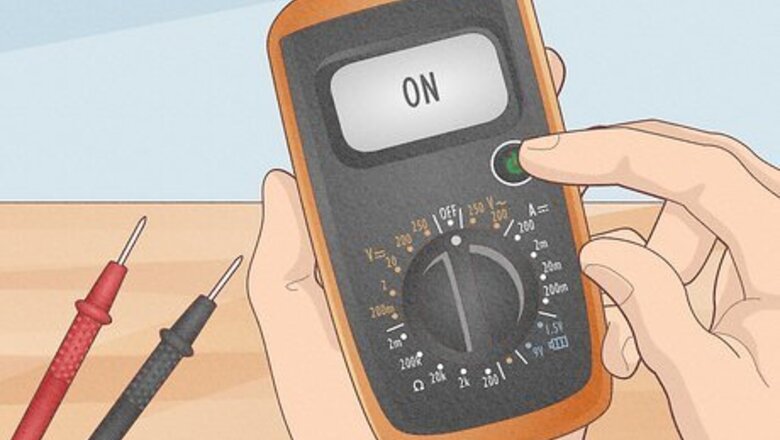
views
- Use a multimeter to measure alternating current (AC) or direct current (DC).
- If you just need to test the voltage of an outlet, use an outlet tester. They report the status of the outlet.
- For testing voltage without touching electrical components, use a non-contact voltage tester.
Using a Two-Lead Probe (Multimeter)
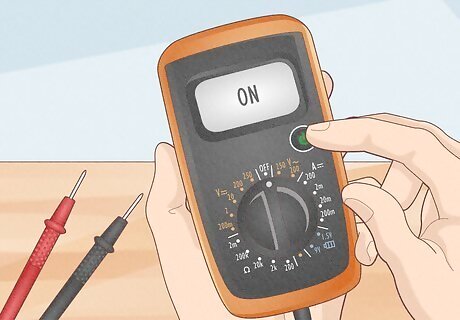
Plug in the multimeter and power it on. A multimeter is a two-lead voltage tester that tells you exactly how much voltage it is reading. Plug in the multimeter and power it on.
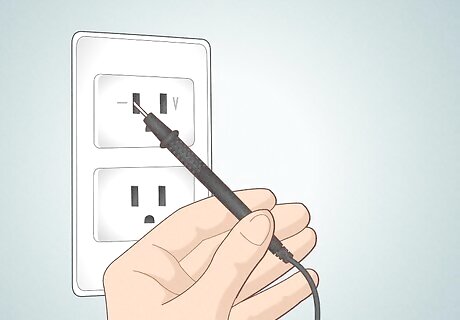
Plug the black probe into the "COM" or "-" port. The black probe is used to measure the ground or neutral wires. Connect this to the port that says "COM" or has a minus (-) sign next to it.
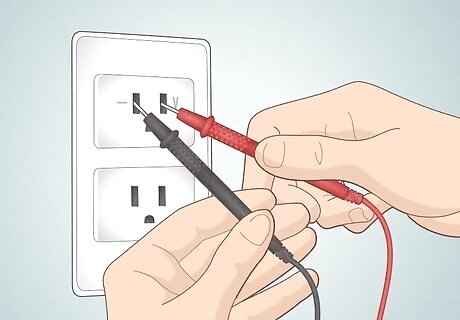
Connect the red wire to the voltage port. Typically the voltage port with a capital "V" next to it. The red probe is used to connect to the hot wire, which is the wire that carries the electrical current. Some multimeters have a port that says "10A" next to it. This is used to measure large electrical currents up to 10 amps.
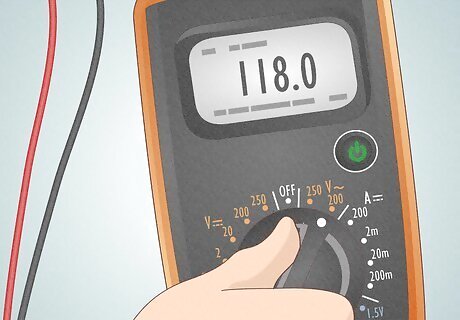
Select the voltage mode. Most multimeters have a dial on the front. This allows you to select the mode, as well as the range of measurement you are expecting to take. Turn the dial so that it is in alternating current (AC) or the direct current (DC) mode. AC is usually indicated by a V with a wavy line next to it. Direct current is usually indicated by a V with a straight line next to it. Some multimeters also allow you to measure Amps and Ohms in addition to voltage.
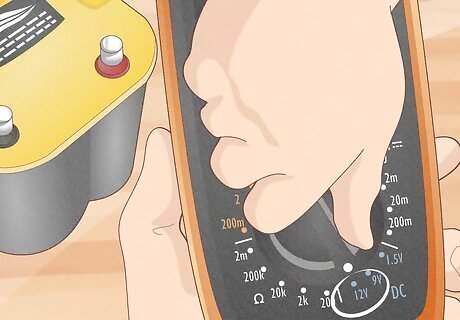
Select the voltage range. In order to get the most accurate reading, you'll need to turn the knob to place the voltage reading within the range you are expecting to receive. For example, if you are testing a 9V battery, selecting 20 volts on the dial will give you a more accurate reading than 2000 volts. The following are common voltages: AA, AAA, C, and D batteries: 1.5V DC. Car battery: 12.6V DC. Electrical outlet, light switch, light fixture: 120V AC. Dryer/Stove Outlet: 220V AC.
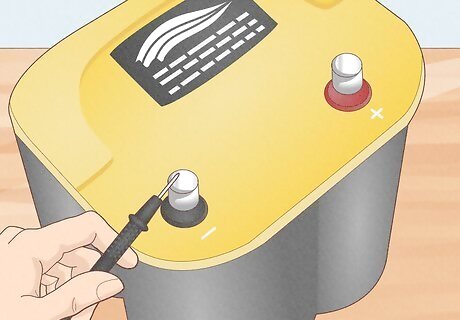
Place the black probe on the ground, neutral wire, or negative terminal. If you are testing a battery, place the black probe on the negative terminal. It is usually labeled with a minus (-) sign. If you are testing an electrical outlet, place the black probe in the large slot. If you are testing electrical wiring, touch the black probe to the exposed white or green wire. You can also purchase accessories for your probes, such as alligator clamps or banana plugs.
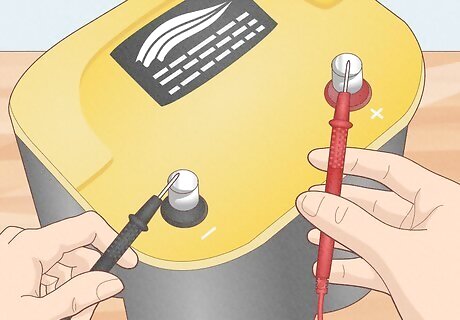
Place the red probe on the hot wire or positive terminal. If you are testing a battery, place the red probe on the positive terminal. It is usually labeled with a plus (+) sign. If you are testing an electrical outlet, place the red probe in the small slot. If you are testing wiring, touch the red probe to the exposed black wire.
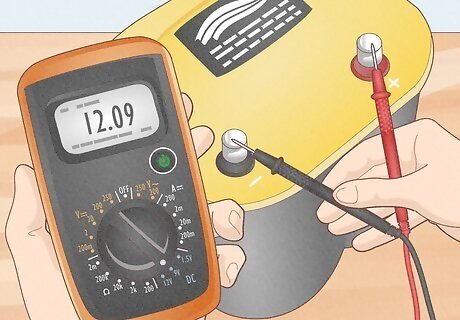
Read the meter. The display should display how many volts it is receiving.
Using an Electrical Outlet Tester
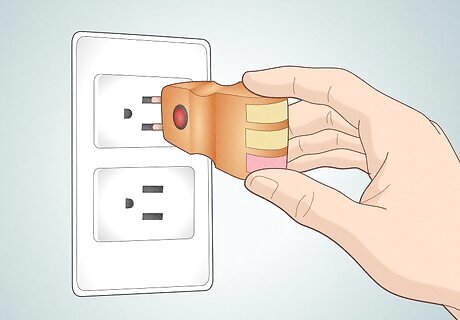
Plug the voltage tester into the outlet. Outlet testers are the simplest type of voltage tester to use. They plug directly into an electrical outlet. They have three lights and a chart that indicates if there are any problems with the electrical outlet.
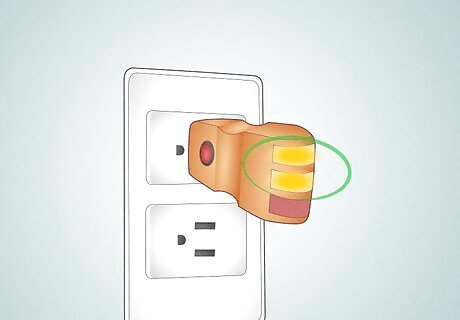
Read the results. Most electrical outlet testers have three lights. There is usually a key on the side of the tester that indicates what the lights mean. Typically, the red light indicates voltage to the ground (green) wire. The first yellow light indicates voltage to the neutral (white) wire, and the second yellow or white light indicates voltage from the hot (black) wire. The hot wire is the wire that carries the electrical current. The following are some common readings: Correct: If both yellow lights are lit up and the red light is dark, this indicates that the outlet is working in most cases. If either the hot or neutral lights are dim, this indicates that the wire is in poor condition. Open Hot: If all lights are dark, this indicates that there is no electricity coming from the hot (black) wire. Electricity may be shut off, or the wire may be disconnected, or bad. Open Neutral: If the second yellow light is lit, but the red and first yellow lights are dark, this indicates that the neutral wire is not getting any electricity. The neutral (white) wire may be disconnected or need to be replaced. Open Ground: If the first yellow light is on, but the second yellow light and the red light is dark, this indicates that the ground wire is not getting any electricity. The ground (green) wire may be disconnected or need to be replaced. Reversed Polarity: If the red light and the first yellow light are lit, this indicates that the hot and neutral wires are reversed. The outlet needs to be re-wired so that the hot and neutral wires are switched. The hot wire wired to the ground could also give this reading. Hot and Ground Reversed: If the red light and second yellow light is lit, but the first yellow light is dark, this indicates that the hot and ground wires are reversed. It could also indicate that the neutral wire is bad and the polarity is reversed. If you get this reading, the entire outlet needs to be re-wired.
Using a Non-Contact Voltage Tester
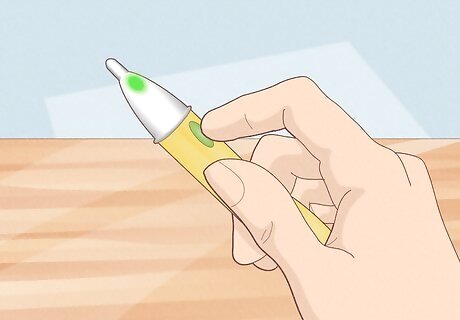
Power on the non-contact voltage tester. Non-contact voltage testers can detect an electrical current without having to touch any live wires or electrical components. This makes them safer to use than other voltage testers. Press the power button on your voltage tester to turn it on. Some non-contact voltage testers require you to press and hold a button to power it on. The device will either chirp, display a light, or both to indicate that it is on.

Test the voltage tester on a working light. This confirms the non-contact voltage tester is working properly. To test the non-contact voltage tester, place the tip of it in the short slot of an electrical outlet, or touch the cord or bulb of a lit lamp.
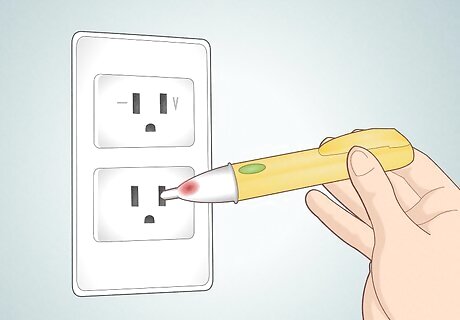
Test an electrical outlet. To test an electrical outlet with a non-contact voltage detector, touch the tip of the non-voltage detector to the small slot on the receptacle of the electrical outlet. It's also a good idea to test the large slot on the receptacle to make sure the outlet is wired properly.

Test a breaker switch. To test a breaker switch, simply touch the tip of the non-contact voltage detector to the switch in the panel of a breaker box.
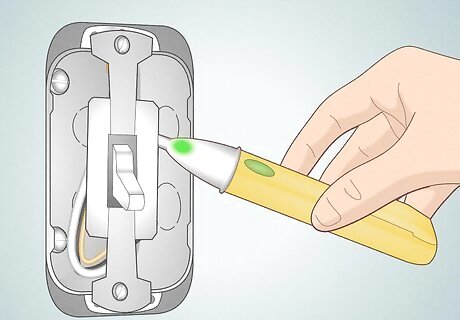
Test a light switch. To test a light switch, make sure the switch is turned on. Unscrew the faceplate from the wall. Then touch the tip of the non-contact voltage detector to the screw terminals on the side of the light switch. Once you confirm a light switch does not have a live electrical current, it is safe to remove the light switch When testing a three-way switch, be sure to test all screw terminals on both switches before continuing.
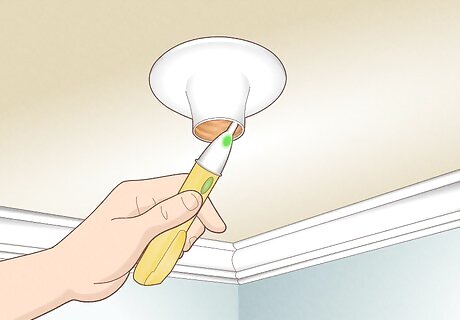
Test a light fixture. Turn on the light switch to the light. Unscrew the light-bulb and place the tip of the non-contact voltage detector inside the light socket. If the light has a three-way switch, be sure to test the light with the switch in both the up and down position. Once you confirm that the light fixture does not have an electrical current, it is safe to remove the light fixture from the ceiling.














Comments
0 comment